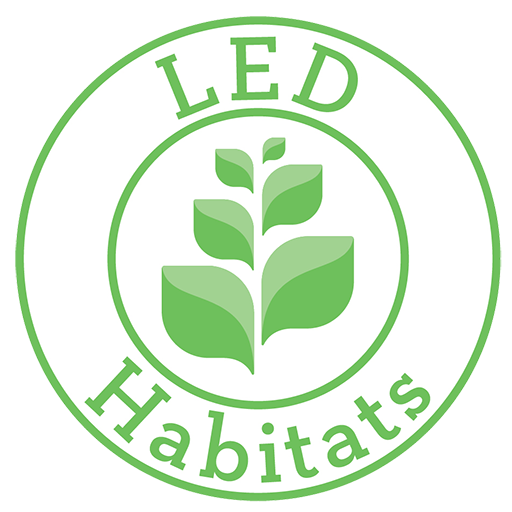We welcome your questions and comments. If your question is not one of these frequently asked questions, please contact us directly.
1. What are the external dimensions of the LED Habitat and Habitat Pro?
The LED Habitat is 10 W x 16″ L x 20″ H
The LED Habitat Pro is 16.5 W x 27.25″ L x 30″ H.
2. How can I check my order’s status?
Using your phone number or order number, you may check the status of your order on our contact page.
3. Does the light come fully assembled?
LED Habitats that are shipped within the continental US can be ordered fully assembled for a modest charge. The LED Habitat Pro or LED Habitats shipped outside of the continental US require simple assembly is required so that your LED Habitat can be packed safely for shipped. Assembly instructions are included; only a screwdriver is needed (and that is provided). The LED Habitat 420 Flower, the Habitat 420 Veg and the Under-cabinet Habitat ship fully assembled
Click here for a PDF of the assembly instructions. Additionally, an assembly how-to video can be found on our YouTube channel.
4. Why are there red, blue, green and white LEDs?
LED Habitats are designed to include light wavelengths in the range of colors that are most important for photosynthesis (primarily reds and blues) plus the colors that humans perceive as sunny and that highlight the natural beauty of leaves.
5. What is the difference between the LED Habitat and the LED Habitat Pro?
The LED Habitat Pro is a larger growing unit. It has approximately three times the LED illumination and three times the illuminated area for growing plants. The LED Habitat Pro is designed to fit a typical garden tray and more. Two Habitat Wicking Tray Sets are included.
6. Do I need to turn off my light at night?
The hours of light that you provide your plants will depend on the types of plants you are growing and how you are using your lights. Because LED’s are highly energy efficient, you may wish to leave the lights on 24/7 when starting seedlings or to light a room through the night. Your Habitat can also be plugged into a timer to automate when the light turns off and on.
7. Are Habitat seedmats organic?
Yes, the seeds, mat paper, and fertilizer that is embedded in the mat are all organic. All seeds are also non-GMO.
8. Do I need to fertilize my seedmat?
No fertilizer is necessary until plants are at least one week old, after which a light application of low-nitrogen fertilizer may help plants in the Flower seed-mat may help promote early and continual blooming. Herbs prefer poor soil, and the salad greens and wheatgrass grow so quickly that no additional fertilizer is needed.
9. How do I water the seedmat before and after plants emerge?
- Begin by feeding the wick through 2 holes of the upper soil tray so the ends hang down into the lower water reservoir.
- Fill your planting tray with pre-moistened (not dry) seedling or potting mix.
- Lay your seedmat on the moist soil surface, then cover it with a light layer of soil.
- Sprinkle water over the soil surface after covering your seedmat with a light layer of soil. Be sure the entire soil surface is thoroughly moistened.
- Maintain soil moisture in the planting tray by keeping the lower water reservoir half full with water. Check the soil moisture content every 2-4 days and add water to the lower reservoir as needed.
- After adding water to the lower leak proof reservoir tray return the two stacked trays to your Habitat.
